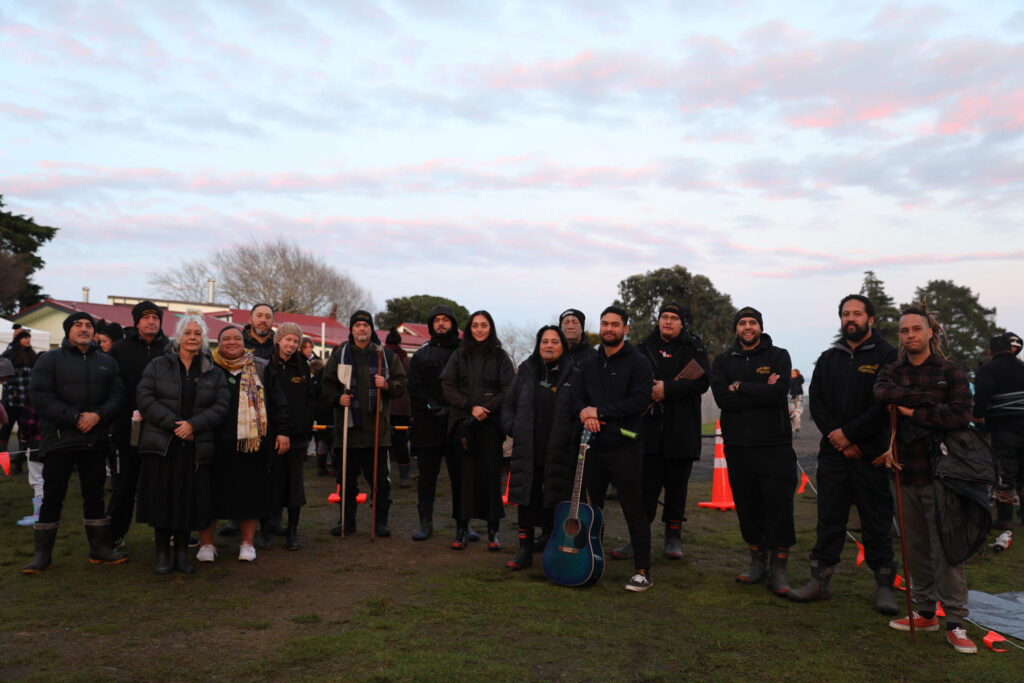By Rereahu Collier – Senior Strategist for Kaupapa Māori

Matariki tāpuapua, Matariki kāhui whetu, Matariki kāhui hononga tangata. I pīata mai ko Pohutukawa, ko Tupu-ā-nuku, ko Tupu-ā-rangi, ko Waitī, ko Waitā, ko Waipuna-ā-rangi, ko Ururangi, ko Hiwa-i-te-rangi. Paiheretia ngā mate ki te kupenga o Taramainuku, ki korā wehe ai ki te rerenga wairua. Paiheretia ngā moemoeā ki a Hiwa-i-te-rangi, ko ngā moemoeā o te tau hou Māori. Tākiri tū ko te Mana Motuhake, tākiri tū ko te mātahi o te tau e!
Matariki, a special time for us as Āotearoa to reconnect amidst the many things that divide us as a nation, a time for us to reconnect to whānau, to remember our loved ones, to also cast our dreams and aspirations to the coming of the Māori New Year.
At the rising of Matariki to the east before the following of Tama-nui-te-rā, we seek guidance for any tohu that may indicate an abundance of kai, favour in environments and strength in connection to people and place.
Tupu-ā-nuku; the star we align to the food that grows in the earth
Tupu-ā-rangi: the star aligned to the food from the sky
Waitī: the star connected to fresh water food
Waitā: the star connected to salt water food
Waipuna-ā-rangi: We look to this star for the presence of rain throughout the year to water crops
Ururangi: We look to this star for the presence of winds in the coming year
Matariki: This star serves as a reminder for whānau to reconnect and strengthen bonds
Pohutukawa: This star we acknowledge for whānau members who have passed over the year
Hiwa-i-te-rangi: This star we look to send our dreams and wishes to for the coming new year
Pūanga: For those living on the west coast of Aotearoa may struggle to see the alignment in the rising of Matariki to the conditions visible on the earth, they look to this star to acknowledge all aspects of renewal, regeneration and reconnection.
When we look at the significance of these whetū it is easy to see the connection they have to health promotion from a holistic perspective. From the kai that we take in and have access to, to the environments and relationships that enable or hinder our ability to be curious and grow.
Over the years the revival of traditional practices aligned to Matariki have grown with the work of Dr. Rangi Mātāmua, seeing a surge of iwi across the country leading ceremonies called Hautapu, through these ceremonies are opportunities for us to prepare offerings to the stars and feed them to an Umu kohukohu whetū (an earth oven that releases steam to feed the stars).
Through the observations of Matariki through a health lens it is important that we align ourselves to the environments that enable us to live our healthiest lives, and the tohu given to us help to identify which areas need to be strengthened, whether that be connecting to friends and relatives, or getting out in the maara and grow your own kai.
There is a whakataukī that says “Nā tō rourou, nā tōku rourou, ka ora ai te iwi”. Our commitment as Healthy Families South Auckland to building collaborative impact alongside key communities helps us to improve health conditions for whānau through a Māori lens, aligning to the tohu given to us by the taiao that surrounds us.
One particular partnership we’ve created is alongside one Mana Whenua group of South Auckland, Ngāti Tamaoho. Our work together takes a critical look at the current food systems surrounding the community of Papakura and looks for indigenous approaches to strengthen the relationship to healthier kai.
One approach takes a look at some of the resources that we hold in council that enable traditional kai practices to flourish in urban settings. One area that showcases this is Ngāti Tamaoho exercising their right as kaitiaki to maintain and preserve the fruit forest established at Hingaia Reserve in Papakura.
What began as an initiative by Gardens For Health and Strathallan College located just down the road, Ngāti Tamaoho have picked up the mantle and ensured the continued growth of the fruit forest as a means of accessible kai for whānau to enjoy whilst playing at the reserve. This highlights how accessible kai can empower health and wellbeing by being close to areas that promote movement.
Ngāti Tamaoho have also partnered with other organisations to debunk the myth that kai is a privilege. Their relationship with Kiwi Harvest and growers around the Pukekohe area allows them to be a distribution place for whānau to gain direct access to kai that may otherwise lead to landfill. The conscious attempt to reduce food waste by redirecting it to places that need it reflect the value of kaitiakitanga, where protecting the taiao and supporting whānau in their essential needs helps to uplift connection within the area.
This year Auckland Council has continued its partnership with Ngāti Tamaoho to celebrate Matariki.
As the designated iwi manaaki for this year they have created events to help communities across Tāmaki Makaurau to celebrate, reflect and experience the different elements that makes Matariki so beautiful, of which can be seen in the kai that is shared between people, the bonds that further bind us to each other, the memories created and the hopes and aspirations for us leading into the new year.
In this year as we celebrate Matariki and Pūanga, we take note of the multiple tikanga shared across the country and remember that at its core we look to come together as a united Aotearoa.
To learn more about Matariki and the work of Ngāti Tamaoho, explore these links below:
Auckland Council Matariki festival
Mānawatia a Matariki, mānawatia te tau hou Māori e!